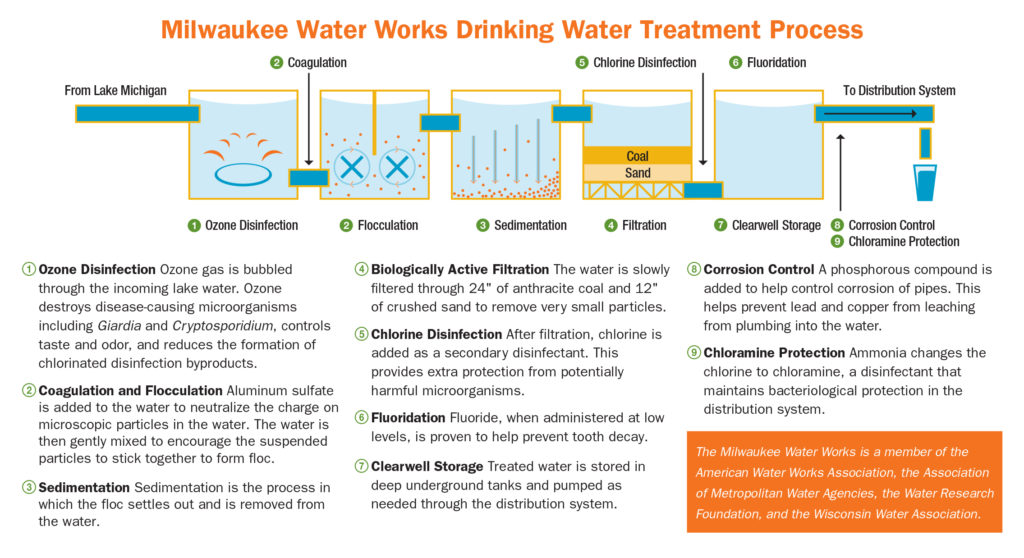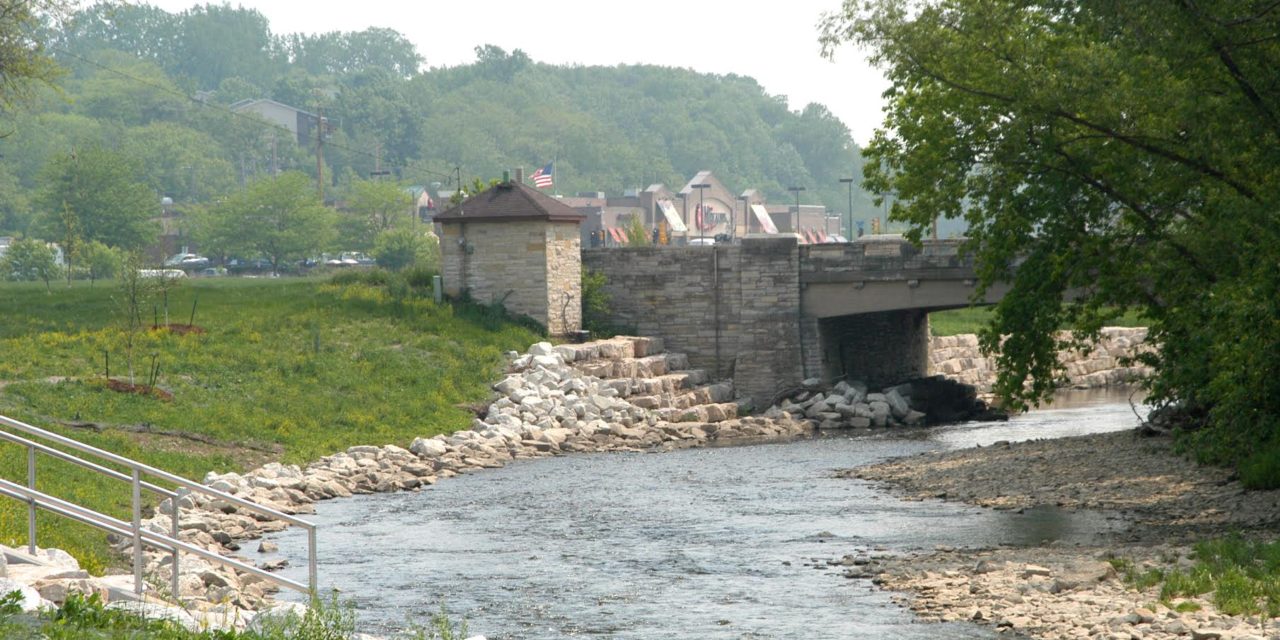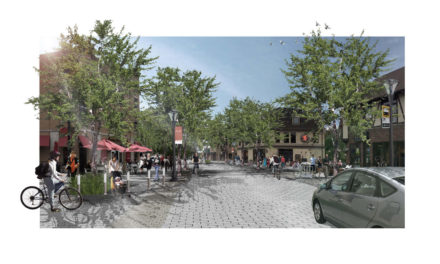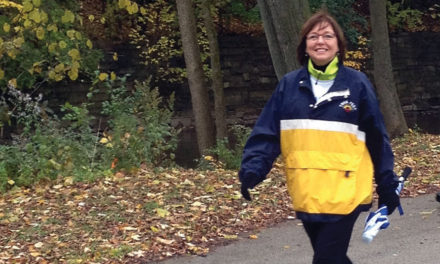By Chris Barlow
As we know, two-thirds of the earth is covered in water. Without water, in its many forms and functions, there would be no life on Earth. It flows freely and plentifully in many places. However, despite its abundance, it is still our most precious resource.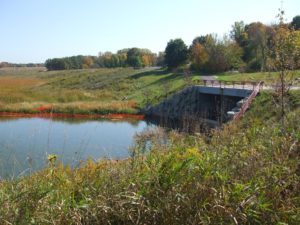
Turning on a faucet and receiving fresh water is something many of us expect everyday. If the water we depend were suddenly determined to be unsafe, it would turn our world upside down and alter the way we live. Take the water disaster in Flint, Michigan as evidence that the safety of our water resources is critical to our way of life.
“We have all the water on Earth we are ever going to have,” Karen Sands, MMSD Sustainability Manager said. “Protecting it in a sustainable, fiscally responsible manner is crucial and a mission we take seriously at MMSD.”
Here in Milwaukee, we have the distinct geological benefit of living near one of the world’s largest reservoirs of fresh water. The Great Lakes fuel our lives with water that sustains the ecosystem that surrounds us. If neglected or abused, this resource will suffer in quality and affect us all.
Researching whether we should be confident or concerned about our water resources, the conclusion we can draw is that we are well-served by those who bring us our water supply. They are deeply concerned about our water quality and safety. And we should be confident that our modern system of water management and protection here in Milwaukee County is world class. That was not always the case.
When the area’s first sewers were constructed over 130 years ago, they carried untreated sewage from homes and businesses and combined it with storm water that all poured into Lake Michigan via our rivers. As the rivers and lake began to fester and pose health risks, the need arose to build a more extensive system to alleviate the contamination of our water. After political wrangling and arguing by the “Sewer Socialists”, the kind we have all grown used to, the Sewerage Commission of Milwaukee (SCM) was established in 1913.
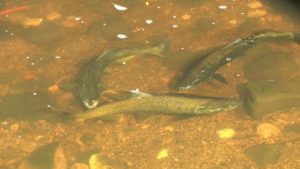 In 1921, The Milwaukee Metropolitan Sewerage District (MMSD) was created and, together with the SCM, they set about the arduous task of cleaning up our wastewater. While it is widely known that the MMSD operates the “deep tunnel” that is part of the system that cleans our water post-use, the other tasks in their purview that contribute to our water distribution and safety are not as well known.
In 1921, The Milwaukee Metropolitan Sewerage District (MMSD) was created and, together with the SCM, they set about the arduous task of cleaning up our wastewater. While it is widely known that the MMSD operates the “deep tunnel” that is part of the system that cleans our water post-use, the other tasks in their purview that contribute to our water distribution and safety are not as well known.
Cleaning our wastewater may seem like the end of the line for potable water, but the point could be made that it is the beginning of many other important processes. After the water leaves our gutters, homes, offices and worksites it flows into the “deep tunnel” system where it collects until there is proper space for transport to the water treatment facility on Jones Island.
The “deep tunnel” system in Milwaukee County is an extremely large wastewater storage system that collects contaminated or unclean water until it can be treated. In 2015, 98.9% of all water flowing into the sewers was captured and cleaned. That is in stark contrast to what occurred at the beginning of the industrialization age and for most of the 20th century.
When our sewer system collects water and after it is transported to Jones Island, there are four main stages to the cleansing process before it is released back into Lake Michigan.
Stage one filtration handles the removal of large and small objects such as gravel, towels, household products and even sand.
In stage two, the water is brought to a settling tank where the grease and oil float to the surface and any remaining solids sink to the bottom. During this process, the solids are collected and used to make energy that is used to run the treatment plan.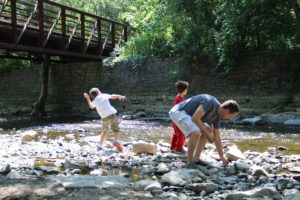
“The solids collected produce methane gas,” Bill Graffin MMSD spokesman said. “We capture that gas and put it through special turbines (engines) that produce energy.”
Currently, the process of collecting and separating solids in our water creates about 60-65% of the energy needed to run the MMSD. At times, other waste products that are collected during the water treatment process, such as glycol from the airport, increase the percentage of reusable energy even more.
The third stage of the water treatment process process is Biological treatment. At this stage, “good bugs” are used to break down the organic material remaining in the water. What good bugs? As a further indication that the MMSD seeks sustainability and renewability, the “bug” used in stage three are dried out and turned into fertilizer. More specifically, a product you may be familiar with; Milorganite.
Disinfection is the fourth and final stage of the water treatment process in which disease causing organisms are killed by chemicals. Additional chemical processes neutralize the water to a proper pH value and the water is piped back to Lake Michigan.
Another very important function of the MMSD is flood management. Wauwatosa has played a large role in the District’s efforts to alleviate water flowing into our homes. Recently, flooding has been problematic in Tosa, most notably in the area around Hart Park. The MMSD seeks to lessen the effects of heavy storms and help us keep our basements dry.
The most recognizable of these flood management projects is the County Grounds water basin. The basins cover 65 acres and hold up to 315 million gallons of water. During extreme storms, the basin can fill in as fast as four hours.
A lesser visible and more recent project is the removal of concrete from the basins of the Menomonee River and Underwood Creek. The concrete was installed early in the 20th Century as a means to control erosion and spur development in the Tosa area. This process proved to have the adverse effect of eliminating the ability of fish to travel upstream due to the increased rapidity of the water.
After removal of the concrete is completed, fish will be able to travel up the river all the way to Menomonee Falls and up its’ many tributaries. MMSD plans to install a naturalized pool system that will give the fish areas to rest as they migrate north. Do not be surprised if you soon witness an increase of fisherman in Tosa’s rivers and creeks.
 All of these waterways and the water treated at the MMSD pour into Lake Michigan and become a part of the water we will use daily. The entity that takes the water from the lake and brings it to our homes is Milwaukee Water Works. The city of Wauwatosa receives its’ water from MWW, as do most of the County’s suburbs.
All of these waterways and the water treated at the MMSD pour into Lake Michigan and become a part of the water we will use daily. The entity that takes the water from the lake and brings it to our homes is Milwaukee Water Works. The city of Wauwatosa receives its’ water from MWW, as do most of the County’s suburbs.
To start the process MWW takes water from the lake and cleans it up for use at two points; The Linwood Water Treatment plant in the north and the Howard Avenue Water Treatment plant in the south. The lake water passes through water treatment process “barriers” that destroy and remove illness-causing microorganisms in the lake water. The primary form of disinfection is ozone gas that, in addition to removing harmful compounds and bacteria, also breaks apart compounds that can cause bad odors and taste in the water.
After a process is employed to remove particles from the water, chlorine is added as a secondary disinfectant, followed by fluoride for reducing tooth decay. After the water is fit for consumption it is sent to one of two pumping stations, where it is distributed throughout the area. “The pumping stations are the hearts of the water distribution system,” MWW spokesman Lon Colliard said. “And the pipes are the circulatory system.”
The water flows through the pipes where it arrives in Tosa and undergoes a similar distribution process. The MWW monitors the water quality daily by sampling the water in the pipes, a function also performed by the City of Tosa. For Tosa, the man in charge is Water Superintendent James Wojcehowicz.
“In 1963 Wauwatosa reached an agreement with the City of Milwaukee to purchase water from them,” Wojcehowicz said. “They do all of water treatment process before it gets to Tosa.”
This partnership creates a sustainable, efficient water supply for over one million people as the MWW has partnered with 28 communities. There are over 3,000 miles of pipes including 203 miles in Tosa alone. Many water mains in Tosa are aging and in need of repair. The city of Tosa can replace about 30 miles of the aging pipes each year. This is an ongoing process that most of you have witnessed near your homes or businesses.
There is also an ongoing conversion of the water meters in Wauwatosa homes that is taking place. This process will enable Tosa to better maintain and monitor the water each of us uses.
The Public Commission sets the cost of water, and the revenue from these collections is the budget that the city uses to do the aforementioned maintenance and any other costs necessary to facilitate our water supply.
Tosa residents and property owners are responsible for the upkeep of the system from the curb stop to the home, except the water meter. The curb stop is attached to the lateral pipes that bring the water from the water main to your house.
Our water needs are relatively inexpensive and are met by a host of people and public entities that all have our best interest in mind. So enjoy that refreshing water that comes to your home via this process, and do your best to conserve one of our most precious resources.
